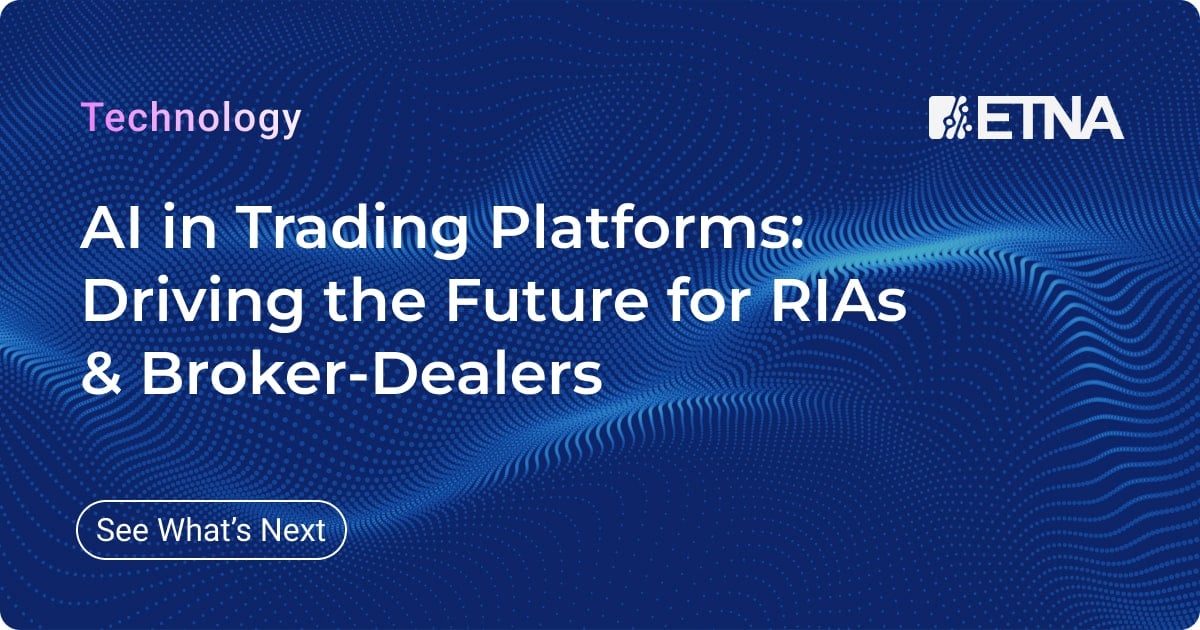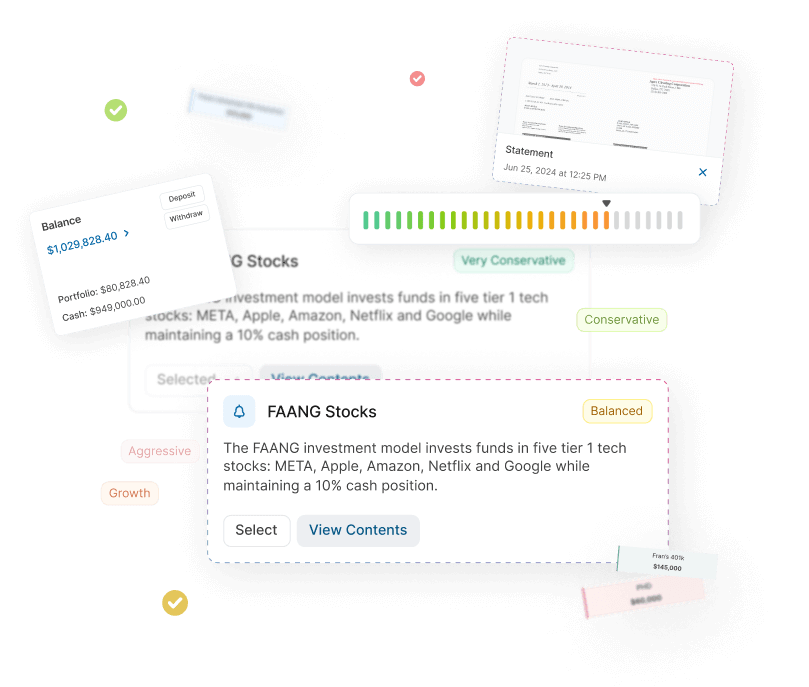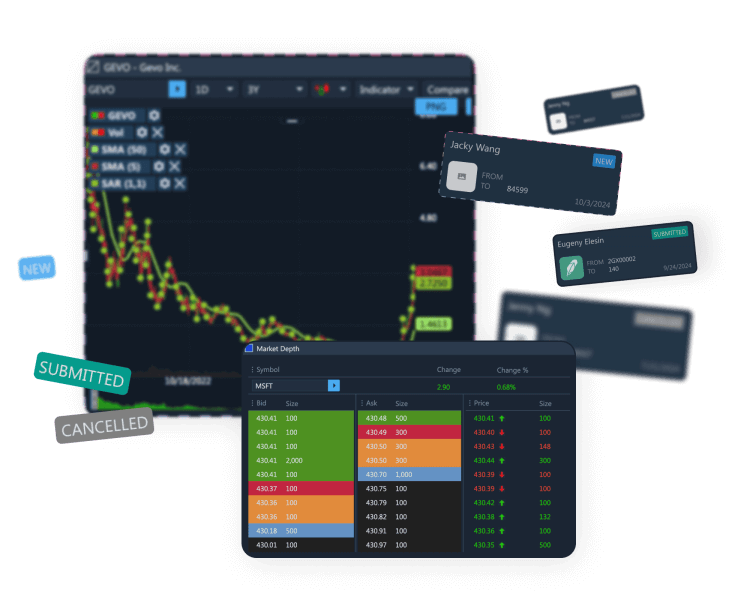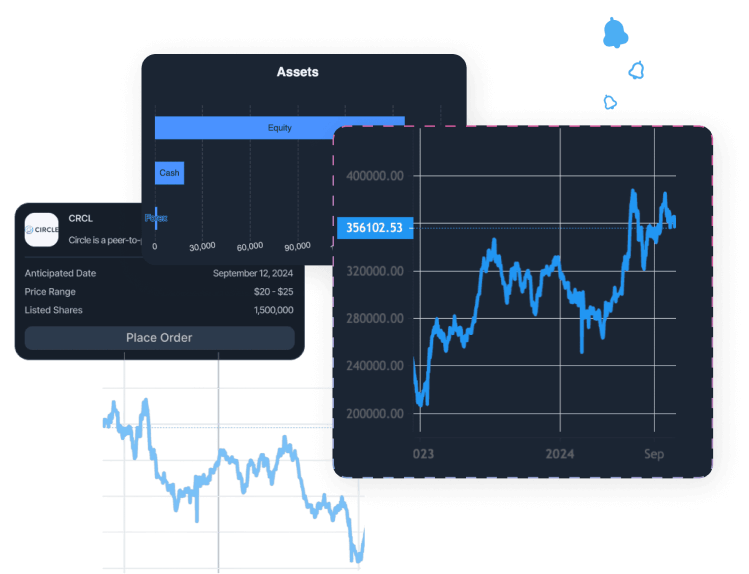
The financial services industry is experiencing a technological revolution that fundamentally transforms how broker-dealers and Registered Investment Advisors (RIAs) operate. Artificial intelligence has emerged as the dominant force reshaping trading platforms, with the global AI trading platform market size projected to reach $69.95 billion by 2034, growing at a remarkable 20.04% CAGR from 2025. This represents a seismic shift in how financial services are delivered, analyzed, and optimized in the modern era.
As trading platforms evolve from simple execution tools to comprehensive AI-powered ecosystems, broker-dealers and RIAs are discovering unprecedented opportunities to enhance performance, reduce costs, and deliver superior client experiences. From automated portfolio management to real-time sentiment analysis, AI is not merely augmenting existing capabilities it’s creating entirely new paradigms for investment decision-making and client engagement.
Modern AI trading platforms are revolutionizing portfolio construction through sophisticated multi-criteria expected returns planning. Unlike traditional models that rely on historical performance and basic risk metrics, AI-powered systems analyze hundreds of variables simultaneously to generate more accurate projections of returns.
These systems employ machine learning algorithms that process diverse data sources, including macroeconomic indicators, sector-specific trends, company fundamentals, and alternative data sources like satellite imagery for agricultural commodities or shipping traffic for global trade analysis. The Stanford Research study demonstrates the power of this approach: an AI analyst created using public information outperformed 93% of mutual fund managers over 30 years by an average of 600%, generating $17.1 million in additional alpha per quarter compared to human managers’ $2.8 million.
Platform providers like QuantConnect offer algorithmic trading engines that enable portfolio managers to backtest, develop, and deploy AI-powered strategies across multiple asset classes. These platforms integrate real-time data feeds with predictive analytics, allowing RIAs to model complex scenarios and optimize expected returns based on multiple criteria, including risk tolerance, time horizon, ESG preferences, and tax considerations.
AI is fundamentally disrupting the traditional expensive data provider model that has dominated institutional investing for decades. Advanced natural language processing tools now extract insights from millions of financial documents, SEC filings, and earnings calls, providing analysis capabilities that previously required teams of research analysts.
Bloomberg Terminal has integrated AI into its analytics and monitoring tools, while newer platforms like Sentieo utilize machine learning algorithms to analyze over 20 million financial documents daily from 64,000 companies worldwide. These systems can identify patterns, extract key financial metrics, and generate investment insights at a fraction of the cost of traditional research teams.
The democratization effect is profound. What once required expensive Bloomberg terminals and dedicated research staff is now available through AI-powered platforms that can process vast datasets and provide institutional-grade analysis to smaller RIAs and independent broker-dealers. Kavout’s AI-powered platform, for example, uses its proprietary “K Score” system to analyze financial data, news sentiment, and technical indicators, providing actionable stock recommendations.
Options trading represents one of the most complex areas where AI delivers transformative value. Traditional options analysis tools require significant expertise and time to model various scenarios, but AI-powered platforms can now simulate thousands of potential outcomes in seconds.
AI systems use Monte Carlo simulations to forecast potential risk and return profiles under different market scenarios. These platforms can automatically calculate implied volatility, assess time decay, and model complex multi-leg strategies while considering factors like liquidity, market impact, and execution costs. The technology enables both institutional traders and RIAs to test sophisticated hedging strategies and identify optimal strike prices and expiration dates based on current market conditions and expected volatility.
Companies like TradeEdge AI focus exclusively on short-term volatility trading, using neural networks to predict price movements within specific timeframes, while platforms like TrendSpider combine technical analysis with machine learning to automatically identify options trading opportunities across multiple timeframes.
The evolution toward vertical AI applications represents a significant opportunity for specialized investment advice. Rather than generic portfolio recommendations, AI systems now provide sector-specific, asset-category-focused guidance that considers industry dynamics, regulatory changes, and competitive positioning.
For example, AI platforms can analyze healthcare investments by processing FDA approval pipelines, patent expirations, and clinical trial data. Similarly, technology sector analysis might incorporate chip demand forecasts, software adoption rates, and venture capital funding patterns. This vertical specialization enables RIAs to offer more sophisticated, industry-specific advice to clients with concentrated exposures or sector preferences.
Asset category analysis has become equally sophisticated. AI systems analyzing REIT investments can process property valuation data, occupancy rates, and local economic indicators, while commodity-focused AI might analyze weather patterns, supply chain disruptions, and geopolitical risks.
AI platforms now offer unprecedented insights into portfolio manager performance attribution, going far beyond simple return calculations. Machine learning algorithms can decompose performance into specific factors: market timing, security selection, sector allocation, and risk management effectiveness.
These systems analyze trading patterns, position sizing decisions, and performance consistency across different market cycles. For RIAs evaluating external managers or analyzing their track records, AI provides granular insights into what drives performance and identifies areas for improvement.
Interactive Brokers has introduced an AI Commentary Generator specifically for advisors, creating custom portfolio performance reports and market commentary using generative AI. This tool helps advisors explain performance attribution to clients in clear, personalized language while identifying specific factors that contributed to returns.
Social sentiment analysis has emerged as a critical component of modern investment decision-making. Research demonstrates that Twitter sentiment can predict stock market movements with over 55% accuracy in developed markets, while the predictive power is even stronger in emerging markets when combined with emotion analysis.
ETNA’s Social Media Index represents a sophisticated example of this technology in action. The platform aggregates real-time sentiment from Twitter, Reddit, StockTwits, and Telegram, using advanced natural language processing to detect tone, context, and even sarcasm. The system provides:
The platform’s capabilities extend beyond simple sentiment scoring. It can identify early trend detection, contrarian trading opportunities, and risk management signals. For RIAs, this means proactive portfolio monitoring that identifies which holdings are gaining or losing favor in public opinion, enabling more informed client communications and risk management.
Charles Schwab’s integration of TD Ameritrade created one of the most comprehensive AI-powered trading ecosystems in the industry. The combination brought together thinkorswim’s advanced analytics with Schwab’s client base, creating a platform serving millions of users with AI-enhanced tools. Schwab’s Intelligent Portfolios robo-advisor and the new Investing Themes platform, powered by proprietary AI algorithms that scan millions of documents, including SEC filings and patent grants, demonstrate how major platforms are productizing AI capabilities.
Interactive Brokers has deployed AI across multiple touchpoints, from its IBot conversational interface that allows users to execute trades using plain English, to AI-powered news summaries and the new Investment Themes tool powered by Reflexivity’s knowledge graph. The platform’s AI Commentary Generator enables advisors to create custom portfolio reports, while smart order routing algorithms utilize machine learning to optimize trade execution.
Goldman Sachs has perhaps the most ambitious AI strategy, with its centralized GS AI Platform serving all 46,000+ employees worldwide. The firm’s multi-model architecture integrates best-in-class LLMs from multiple providers, while proprietary tools like Marcus AI analyze customer spending patterns for personalized financial products. Goldman’s AI-powered trading system achieves an annualized excess return of 8.7%.
The statistics surrounding AI adoption in trading platforms reveal a rapidly accelerating transformation:
Real-world implementations demonstrate significant performance improvements across the industry:
Institutional Success: JKL Securities leveraged AI for high-frequency options trading, resulting in a 25% increase in annual trading volume and improved profitability. Goldman Sachs’ machine learning model for trade execution optimization, known as Marquee, has enhanced decision-making across trading operations.
Democratization Impact: AI-powered platforms like Zen Ratings have delivered 32.5% annualized returns since 2003 triple the market average while remaining free for retail investors. Similarly, robo-advisors like Betterment and Wealthfront have attracted over $1 trillion in assets by offering institutional-grade portfolio management through AI algorithms.
Research Revolution: AlphaSense’s AI-powered search engine has revolutionized financial research, reducing analysis time by 75% and processing over 100 million documents daily, leading to a 20% increase in successful investment decisions for its clients.
AI has transformed risk management and compliance monitoring across the industry. Hawk AI’s machine learning platform achieves 99.9% accuracy in fraud detection while minimizing false positives. These systems process transactions in real-time, identifying suspicious patterns and potential money laundering activities far more effectively than manual processes.
For RIAs, AI-powered compliance tools automate regulatory reporting, monitor trading activities for violations, and provide audit trails that satisfy regulatory requirements. This automation reduces compliance costs while improving oversight quality, with some firms reporting 60% reductions in compliance-related operational costs.
The trajectory of AI in trading platforms points toward increasingly autonomous systems capable of complex reasoning and multi-step execution. Interactive Brokers’ evolution from automating single tasks in the 1980s to offering complex algorithms today sets the stage for the next leap: autonomous trading agents that can execute entire investment strategies with minimal human intervention.
The emergence of agentic AI systems suggests a future where advisors define high-level objectives such as “accumulate a 100,000 share position over three hours with minimal market impact while continuously hedging portfolio delta exposure” and AI agents orchestrate the entire process across multiple asset classes and time horizons.
This evolution represents more than technological advancement; it’s a fundamental transformation of the financial services industry. As AI capabilities continue to expand and costs continue to decline, the competitive advantages will increasingly accrue to platforms and advisors who can most effectively harness these technologies to deliver superior outcomes for their clients.
The rise of AI in trading platforms is not just changing how we trade it’s reshaping the entire landscape of financial advice, portfolio management, and client relationships. For broker-dealers and RIAs, the question is no longer whether to adopt AI, but how quickly and effectively they can integrate these transformative technologies into their operations to remain competitive in an increasingly AI-driven marketplace.

Demo Financial Advisor Software
Manage portfolios with advanced rebalancing and real-time insights.
Access customizable client reports and streamlined compliance tools.
Designed for advisors seeking efficient client and portfolio management.


Demo Advanced Trading Platform
Test multi-asset strategies with real-time and historical data.
Analyze market depth, execute complex options, and algorithmic orders.
Ideal for refining strategies and risk management before live trading.


Demo Paper Trading Platform
Practice trading with virtual funds in real market conditions.
Simulate cash, margin, and day-trader accounts to gain experience.
Perfect for honing skills in a risk-free, customizable environment.

